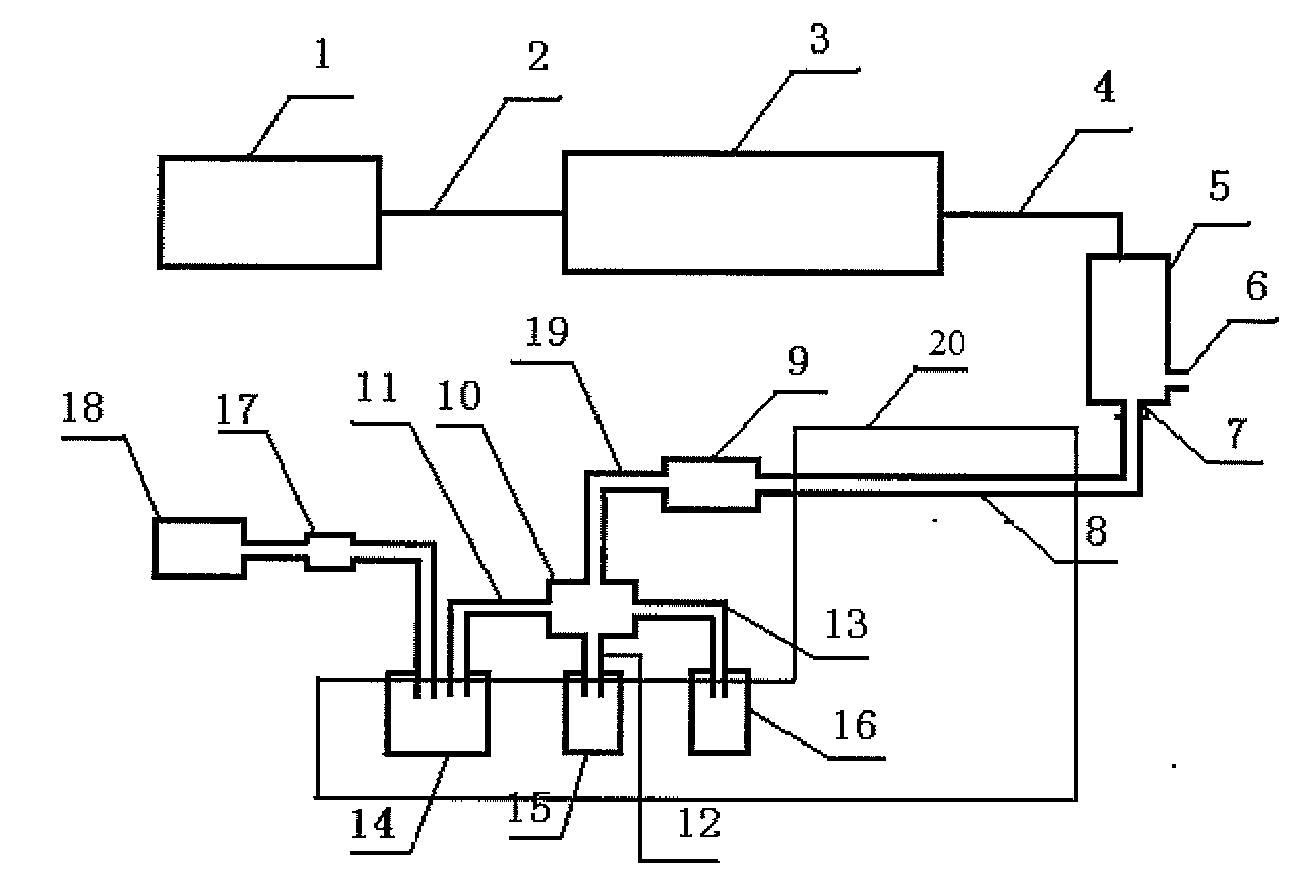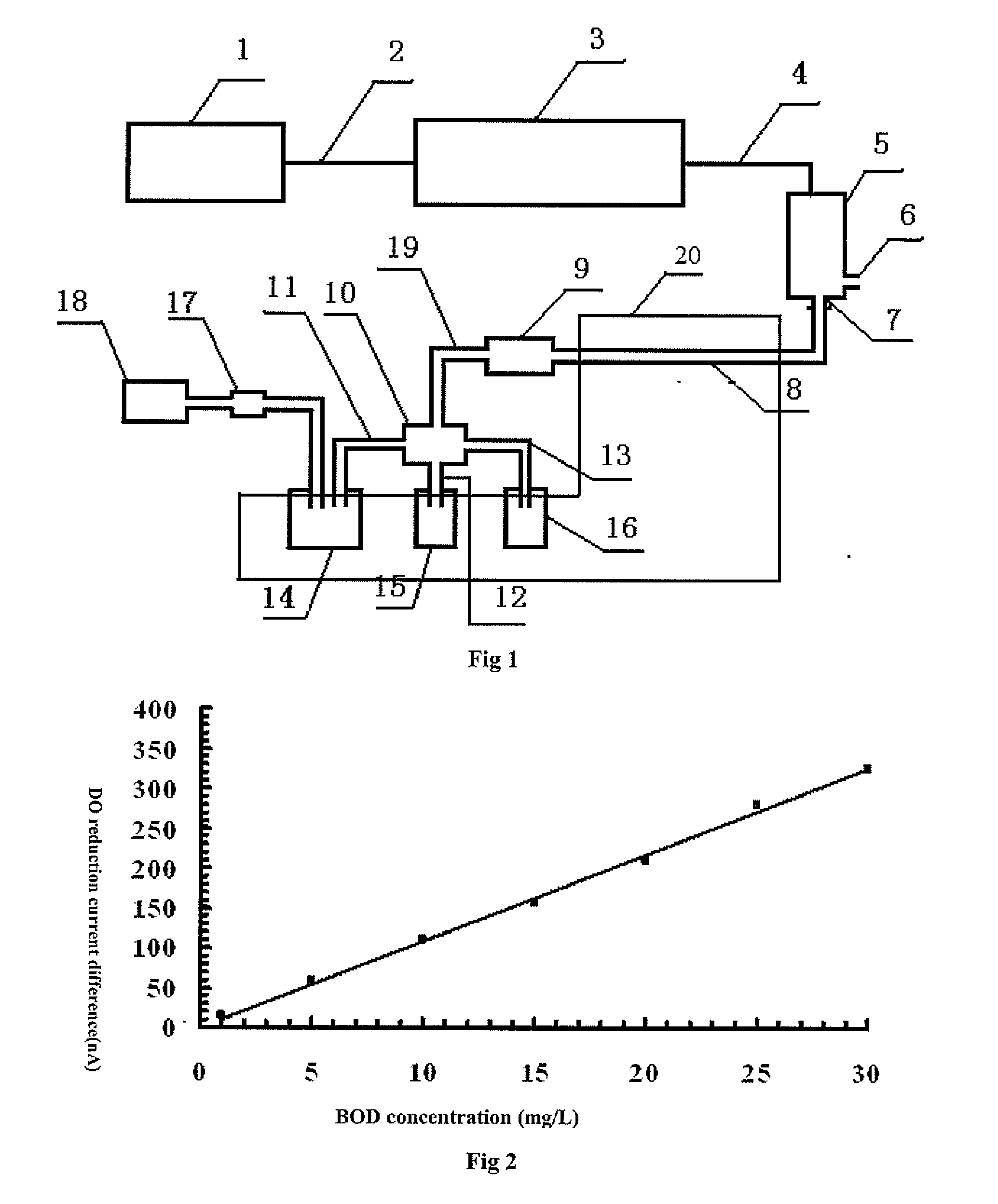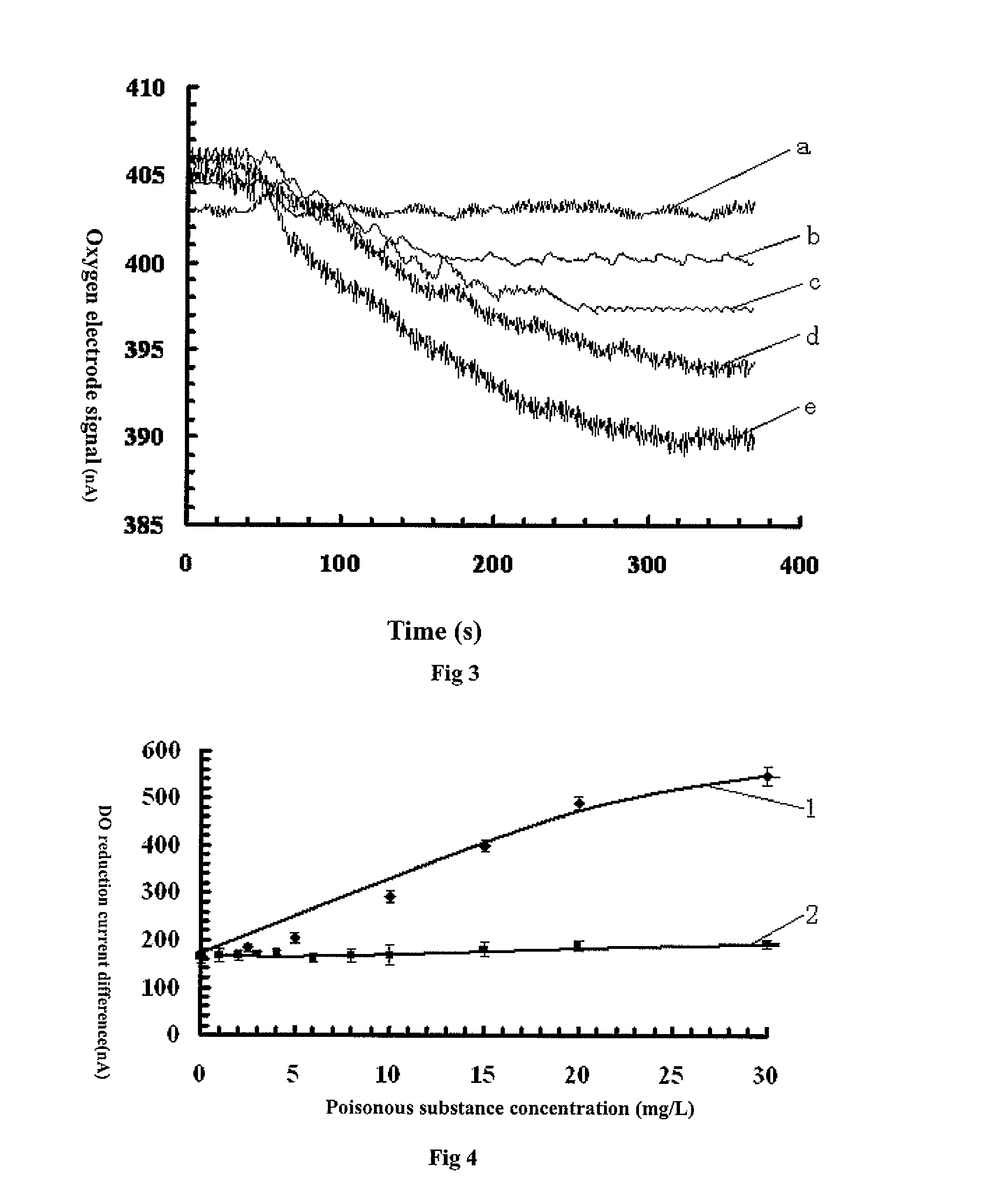Method for detecting biochemical oxygen demand
a biochemical and oxygen demand technology, applied in the field of environmental protection, can solve the problems of time-consuming, complex operations, and intensive work load
- Summary
- Abstract
- Description
- Claims
- Application Information
AI Technical Summary
Benefits of technology
Problems solved by technology
Method used
Image
Examples
example 1
[0117]According to the schematic diagram shown in FIG. 1, a biofilm reactor was prepared. One end of the biofilm reactor was connected with an oxygen electrode 5, the oxygen electrode 5 was accessed in an electrochemical workstation 3 with CHI832b type, and said electrochemical workstation 3 monitored the current change of the oxygen electrode 5, and the current change was displayed by a computer 1.
[0118]The thermostatic water bath 20 was activated, and the temperature was adjusted to 30□. Activated sludge water sample 300 mL was injected into the water sample container 14 from the water source 18 via the sampling pump 17, and said activated sludge water sample was subjected to air saturation at a rate of 3.0 L / min. The glass reactor 8 with a length of 105.0 cm and an inside diameter of 2.0 mm was placed in the thermostatic water bath. The activated sludge water sample was transported to the reactor 8 through the first injection tube 11, the electromagnetic valve 10 and the sample o...
example 2
[0119]The thermostatic water bath 20 was activated, and the temperature was adjusted to 30□. Tap water of 300 mL was injected into the tap water container 15, and subjected to air saturation at a rate of 3.0 L / min. Under the control of the peristaltic pump 9, the air-saturated tap water reached the biofilm reactor through the second injection tube 12, the electromagnetic valve 10 and the sample outlet tube 19 at a rate of 1.0 mL / min, and then flowed through said biofilm reactor to reach the surface of the oxygen electrode 5. The electrochemical workstation 3 monitored the change of the oxygen electrode current. When the oxygen electrode current was stable, the DO reduction current was recorded as 539 nA.
[0120]Glucose 150 mg and glutamic acid 150 mg were dissolved in tap water, and diluted to a constant volume of 100 mL to obtain mother liquor of the GGA solution with BOD concentration of 1980.0 mg O2 / L. A portion of said mother liquor was diluted with tap water, so as to obtain GGA ...
example 3
[0122]The thermostatic water bath 20 was activated, and the temperature was adjusted to 30□. Tap water 300 mL was injected into the tap water container 15, and subjected to air saturation at a rate of 3.0 L / min. Under the control of the peristaltic pump 9, the obtained air-saturated tap water reached the reactor 8 through the second injection tube 12, the electromagnetic valve 10 and the sample outlet tube 19 at a rate of 1.0 mL / min, and then reached the surface of the oxygen electrode 5 after flowing through the reactor 8. The electrochemical workstation 3 monitored the change of the oxygen electrode current. When the oxygen electrode current was stable, the DO reduction current was recorded as 538 nA.
[0123]Water sample obtained from a secondary precipitation pool of the second sewage treatment plant in Changchun city of China was subjected to air saturation at a rate of 3.0 L / min. Under the control of the peristaltic pump 9, the water sample in the water sample container 14 reache...
PUM
| Property | Measurement | Unit |
|---|---|---|
| concentration | aaaaa | aaaaa |
| length | aaaaa | aaaaa |
| length | aaaaa | aaaaa |
Abstract
Description
Claims
Application Information
 Login to View More
Login to View More - R&D
- Intellectual Property
- Life Sciences
- Materials
- Tech Scout
- Unparalleled Data Quality
- Higher Quality Content
- 60% Fewer Hallucinations
Browse by: Latest US Patents, China's latest patents, Technical Efficacy Thesaurus, Application Domain, Technology Topic, Popular Technical Reports.
© 2025 PatSnap. All rights reserved.Legal|Privacy policy|Modern Slavery Act Transparency Statement|Sitemap|About US| Contact US: help@patsnap.com



